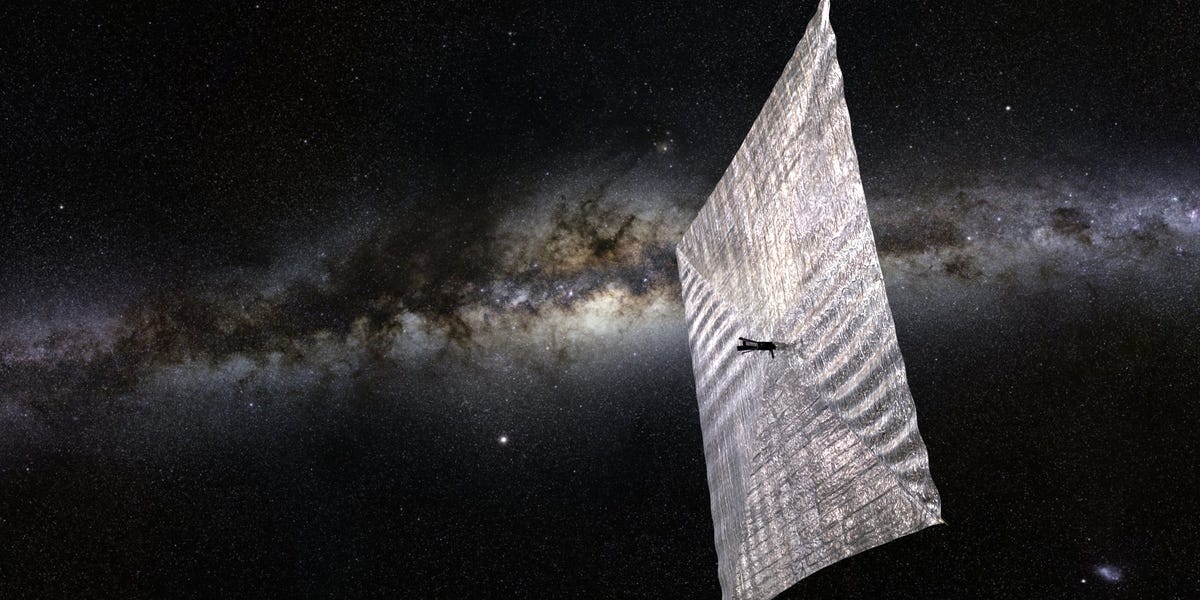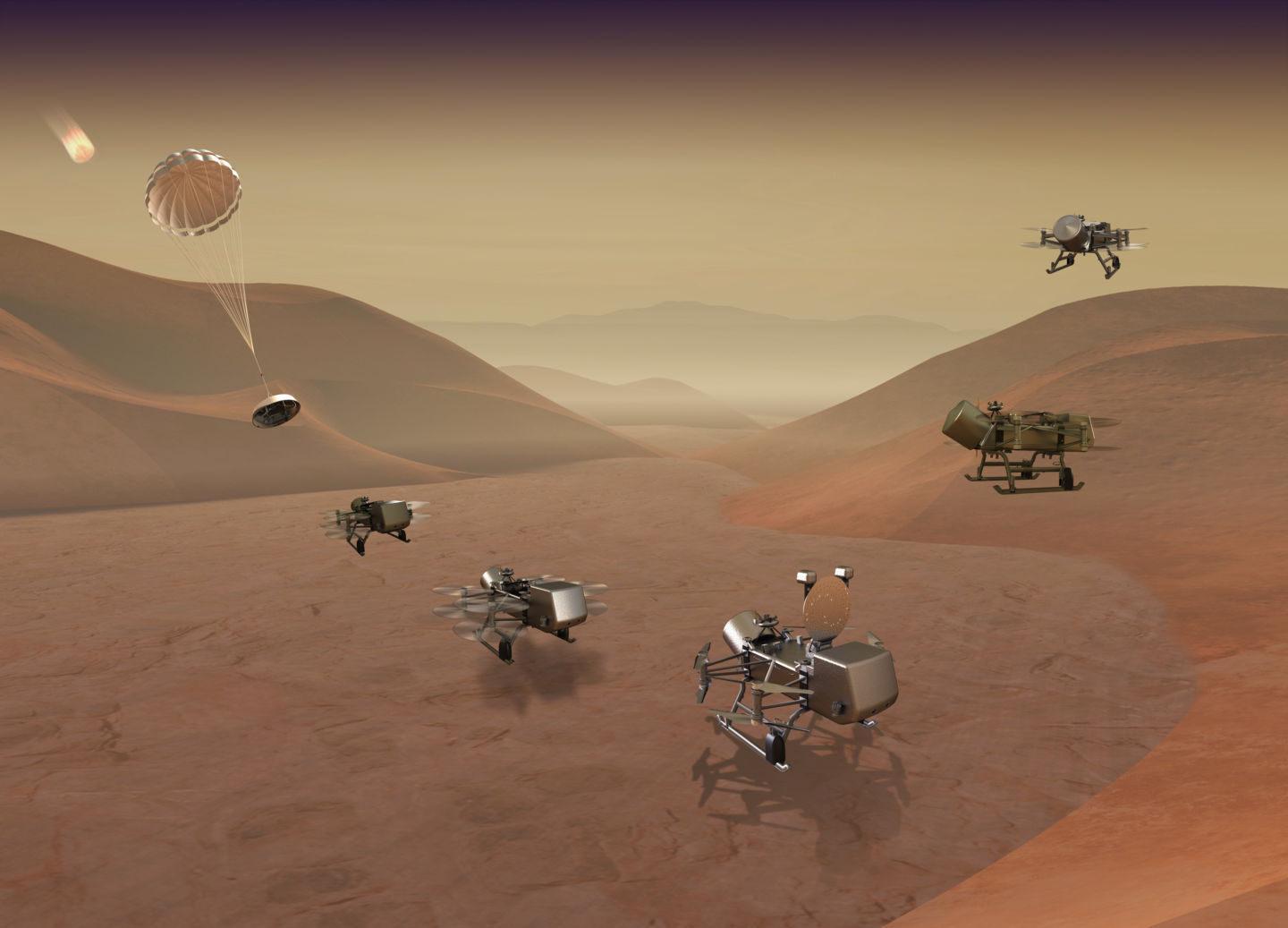Install the app
How to install the app on iOS
Follow along with the video below to see how to install our site as a web app on your home screen.
Note: This feature may not be available in some browsers.
You are using an out of date browser. It may not display this or other websites correctly.
You should upgrade or use an alternative browser.
You should upgrade or use an alternative browser.
Avaruus
- Viestiketjun aloittaja Juke
- Aloitus PVM
Toinen kerta
Toinen kerta, vahvempi löytö.
Muskin raskain Falcon heavy tekee huomenna vaikeimman laukaisunsa ikinä. Se vie useita satelliitteja usealle eri radalle. Jopa neljä erillistä polttoa eri vaiheissa. Lopuksi kaikki raketit laskeutuvat alustoille takaisin.
Ihmeellistä tässä on tuo Falcon heavyn eläkkeelle jääminen kiireellä josta on aiemmin uutisoitu. Uusi BFR, Big Fucking Rocket, tai Big Falcon Rocket on tulossa ja rakenteilla.

 www.tekniikkatalous.fi
www.tekniikkatalous.fi
Ihmeellistä tässä on tuo Falcon heavyn eläkkeelle jääminen kiireellä josta on aiemmin uutisoitu. Uusi BFR, Big Fucking Rocket, tai Big Falcon Rocket on tulossa ja rakenteilla.
SpaceX:n jättiraketin erikoinen tiistaiaamu – Elon Musk tulevasta laukaisusta: ”Vaikein yhtiömme historiassa”
Mission tavoitteena on näyttää Falcon Heavyn suorituskykyä.
fulcrum
Greatest Leader
Falcon Heavy ei varmaankaan tuo sellaista kertaluokan kustannuspudotusta mitä Musk toivoo. Lisäksi kolmesta raketista kasattuna sen muoto ei ole ideaali, kuormasuojus on kovin kapea tuon kokoluokan raketille mikä rajoittanee sellaisia isoja lasteja mitä mm. miehitetyt ohjelmat tarvitsisivat.
Sillävälin Venäjällä:
-Venäjän suurimman optisen teleskoopin BTA-6:n peilinvaihto on epäonnistunut. Teleskoopin tarina on sellainen että 70-luvulla sen alkuperäinen peili osoittautui epäonnistuneeksi, joten siihen valettiin uusi. Tämä kakkospeili oli 2010-luvulle tultaessa pahasti syöpynyt ja olisi pitänyt pinnoittaa uudestaan, joten päätettiin sen sijaan hioa ykköspeili uusiksi modernimmalla tekniikalla. Projekti vei vuosikausia, ja saatiin valmiiksi viime vuonna. Uusittu ykköspeili ei kuitenkaan ollut yhtään parempi kuin vanha peili - useimpien astronomien mielestä huonompi - joten se on päätetty poistaa ja sen sijaan pinnoittaa kakkospeili uusiksi.
-Röngtenteleskooppi Spektr-RG:n laukaisu on lykätty lauantaille. Nyky-Venäjällä merkittävät tieteelliset luotaimet tai satelliitit ovat harvinaista herkkua. Kyseessä on ensimmäinen Lagrangen pisteeseen laukaistava röngtenteleskooppi ja tavoitteena on kartoittaa koko tähtitaivaan röngtenlähteet, tavoitteena ennenkaikkea oppia lisää pimeästä energiasta. Laite on tehty yhteistyössä Saksan avaruusohjelman kanssa.
Sillävälin Venäjällä:
-Venäjän suurimman optisen teleskoopin BTA-6:n peilinvaihto on epäonnistunut. Teleskoopin tarina on sellainen että 70-luvulla sen alkuperäinen peili osoittautui epäonnistuneeksi, joten siihen valettiin uusi. Tämä kakkospeili oli 2010-luvulle tultaessa pahasti syöpynyt ja olisi pitänyt pinnoittaa uudestaan, joten päätettiin sen sijaan hioa ykköspeili uusiksi modernimmalla tekniikalla. Projekti vei vuosikausia, ja saatiin valmiiksi viime vuonna. Uusittu ykköspeili ei kuitenkaan ollut yhtään parempi kuin vanha peili - useimpien astronomien mielestä huonompi - joten se on päätetty poistaa ja sen sijaan pinnoittaa kakkospeili uusiksi.
-Röngtenteleskooppi Spektr-RG:n laukaisu on lykätty lauantaille. Nyky-Venäjällä merkittävät tieteelliset luotaimet tai satelliitit ovat harvinaista herkkua. Kyseessä on ensimmäinen Lagrangen pisteeseen laukaistava röngtenteleskooppi ja tavoitteena on kartoittaa koko tähtitaivaan röngtenlähteet, tavoitteena ennenkaikkea oppia lisää pimeästä energiasta. Laite on tehty yhteistyössä Saksan avaruusohjelman kanssa.
Tiistaina tehty Falcon heavyn usean satelliitin eri radoille vienti onnistui. Sinne meni 152 ihmisen tuhkat, Nasalle atomikello ja yksityinen aurinkopurje. Ensimmäinen pelkällä aurinkopurjeella kulkeva Lightsail2 on osittain kickstartilla rahoitettu.

 www.businessinsider.com
www.businessinsider.com
SpaceX's Falcon Heavy has successfully launched the first 'solar sailing' spacecraft into orbit. It will be powered purely by light.
At 2:30 a.m. ET on Tuesday, SpaceX's Falcon Heavy rocket launched, carrying the first "solar sailing" spacecraft into orbit.
http://www.marsdaily.com/reports/A_Martian_methane_belch_melts_away_999.htmlThe mystery of the Martian methane continues.
NASA's Curiosity Rover last week detected the highest ever levels of the colorless, odorless gas over the course of its seven year mission on the Red Planet, raising hopes it could be evidence of the existence of microbial life.
But a follow-up experiment this weekend found the methane had returned to background levels, NASA said Tuesday, suggesting the temporary spike was caused by one of a number of transient plumes observed by Curiosity in the past.
Scientists have tracked a seasonal rise and fall in background methane levels but haven't been able to establish a pattern for the transient plumes.
"We're more motivated than ever to keep measuring and put our brains together to figure out how methane behaves in the Martian atmosphere," said Ashwin Vasavada, Curiosity's project scientist at NASA's Jet Propulsion Laboratory.
NASA added that Curiosity doesn't have instruments that can definitively say whether the source of the methane is a byproduct of living organisms or a result of geological phenomena.
One leading theory is that the methane is being released from underground reservoirs created by long extinct life forms.
Though Mars has no active volcanoes like on Earth, it is also possible that methane is being produced by reactions of carbon from carbonate rocks or carbon dioxide, with hydrogen from liquid water.
Viimeinen paragraph, "Mars has no active volcanoes like on Earth." Mutta Marssin järistykset ovat todellisia ja niitä on pystytty mittaamaan. Marssissa ei ole Maan, tai Venuksen, tai IOn kaltaista geologista toimintaa, mutta siellä on käynnissä jotakin. Ehkä ihmiskunta oppii tästä ja on ehkä parempi että lähestymme mahdollista löytöä robotit kärjessä.

https://arstechnica.com/science/201...ary-mission-to-fly-through-titans-atmosphere/On Thursday, NASA announced its next medium-class mission to explore the Solar System—a lander named Dragonfly that will fly like a drone over the surface of Titan, Saturn's largest Moon. Titan has a fascinating environment, with a hydrocarbon atmosphere much thicker than Earth's atmosphere. NASA intends to spend a couple of years exploring its complex chemistry.
NASA scientists were deciding between this Titan explorer and another mission that would have flown to a comet named 67P/Churyumov–Gerasimenko. The comet had been visited previously by Europe's Rosetta spacecraft, but the new mission would have returned a sample of cometary material to Earth.
https://www.universetoday.com/142689/earth-to-mars-in-100-days-the-power-of-nuclear-rockets/2/The Solar System is a really big place, and it takes forever to travel from world to world with traditional chemical rockets. But one technique, developed back in the 1960s might provide a way to dramatically shorten our travel times: nuclear rockets.
Of course, launching a rocket powered by radioactive material has its own risks as well. Should we attempt it?
https://www.sott.net/article/399393...ine-aims-to-revolutionize-long-range-missionsA key component of Russia's future nuclear space propulsion system, which may revolutionize long-range exploration of the solar system, has been successfully tested, RIA Novosti reported.
Since at least 2009, Russian space and atomic engineers have been developing a special space propulsion system, which uses a 1 megawatt nuclear fusion reactor as source of energy. According to a work competition report, published on a website tracing public spending in Russia and reviewed by the news agency, one of the crucial elements of the system, which is responsible for cooling down the reactor, has been successfully tested.
The nuclear engine, which is known by its abbreviation YaEDU (Nuclear Propulsion and Power Engine System) consists of a small fast-neutron nuclear reactor, an electricity generator fed by the reactor's heat and space thrusters powered by the generator.
Unlike chemical rocket engines, which burn through their propellant in mere minutes, the YaEDU will be able to work for tens of thousands of hours before the reactor core expires. That would allow accelerating a spacecraft to much greater speed over time. The system also acts as a reliable source of power for onboard electric systems as a side benefit. So this type of propulsion is much better than traditional rockets for long-range space missions, like exploration of Mars and beyond.
http://www.spacedaily.com/reports/Discovered_A_new_property_of_light_999.htmlResearchers have discovered that light can possess a new property, self-torque. This discovery could open up exciting possibilities in light-related applications, researchers explain in a related video, including as relates to the improvement of smart phones and hard drives. The utility of light is tightly connected to our ability to control light.
In addition to many well-known properties like intensity and wavelength, light can be twisted, possessing what's known as angular momentum, something researchers have known for several decades. Beams carrying highly structured angular momentum, or orbital angular momentum (OAM), are known as vortex beams.
Their intensity, which has a donut-like shape, has applications in optical communications, microscopy, quantum optics and microparticle manipulation. Recently, the way novel properties of structured light beams can be achieved by exploiting angular momentum has garnered renewed interest.
Here, speculating that beams that carry OAM could operate in a time-dependent matter, researchers led by Laura Rego, discovered that light can possess a new property, self-torque.
Light beams with self-torque possess an angular momentum that changes continuously in time. These beams can be naturally generated through the process of high-harmonic generation. They look like a croissant, containing over an octave of orbital angular momentum values along the light pulse.
In several experiments, the authors studied the unique properties of beams with self-torque. "This is the first time that anyone has predicted or even observed this new property of light," said Rego in a related video. "For example, we think we can modulate the orbital angular momentum of light in the same way frequency is modulated in communications."
Valon vääntömomentti. Tätä joutuu miettimään hieman aikaa.

Kaksi yhdysvaltalaista senaattoria haluaa suojella Kuun seutua, jonne Apollo 11 laskeutui
Rauhallisuudenmeren tukikohta on heinäkuun 1969 jälkeen vain hieman pölyttynyt, ei muuta. 2020-luvulla se on vaarassa.
tulikomento
Supreme Leader
Uusi kuusiosainen sarja astronauttikoulutuksesta. Osa 1/6. Konsulttina toimii kanadalaisastronautti Chris Hadfield.

 areena.yle.fi
areena.yle.fi

K1, J1: Alkukarsinta | Astronautti: Maailman kovin ammatti
Osa 1/6. Alkukarsinta. Astronautti Chris Hadfield, entinen Nasan lääketieteen tutkija Kevin Fong ja psykologi Iya Whiteley laittavat 12 astronauttikokelasta rankkoihin fyysisiin sekä psykologisiin testeihin saadakseen selville, onko kokelaissa ainesta astronautiksi. Testeissä epäonnistuminen voi...
astronauttikoulutuksesta.
En hirveästi pidä maailman kovin ammatti kun niitä on paljon vaikeampia, ja kovempia kuin astronautin duuni.
tulikomento
Supreme Leader
En hirveästi pidä maailman kovin ammatti kun niitä on paljon vaikeampia, ja kovempia kuin astronautin duuni.
Onhan tuo suurelle yleisölle tehtyä viihdettä, mutta antaa nyt edes jonkinlaista kuvaa siitä mitä astronauttikoulutus oikeasti on.
Race is on!!
http://www.moondaily.com/reports/Sc...build_payload_for_2021_lunar_landing_999.htmlScavenging spare parts and grabbing off-the-shelf hardware, University of California, Berkeley, space scientists are in a sprint to build scientific instruments that will land on the Moon in a mere two years.
NASA announced on Monday that it has selected 12 scientific payloads to fly aboard three lunar landing missions within the next few years. One of them will be the Lunar Surface Electromagnetics Experiment (LuSEE), which will be built under the direction of Stuart Bale, a UC Berkeley professor of physics and a veteran of several past NASA missions, including the Parker Solar Probe that was launched last August.
The science and technology experiments will explore the Moon's surface environment in advance of upcoming human missions and are part of NASA's collaboration with commercial partners to launch payloads - and, by 2024, humans - to the Moon.
tulikomento
Supreme Leader
50-vuotta kohta mennyt tästä
Leaderwolf
Respected Leader
http://www.spacedaily.com/reports/S...that_enables_rockets_to_orbit_longer_999.htmlChinese scientists have made a breakthrough in cryogenic rocket engine technology that can extend the orbital period of rockets from a few hours to 30 days, providing support for China's future deep space exploration.
Cryogenic rocket engines are specially designed to work at extremely low temperatures. They use non-toxic and non-polluting propellants, such as liquid hydrogen and liquid oxygen, which are more cost-efficient than others.
The engine has been widely used in domestic and foreign launch vehicles, including China's Long March-5 and Long March-7 carrier rockets.
However, most of these rockets can orbit only a few minutes or a few hours. An extended orbital period has puzzled the aerospace community for a long time.
Scientists from the China Academy of Launch Vehicle Technology have developed two insulating materials that can reduce propellant evaporation loss and keep rockets in flight for longer than before.
According to Zhang Shaohua, a member of the research team, a cryogenic rocket will face a severe thermal environment when it flies in orbit, which will cause lots of propellant evaporation, accelerate propellant loss and reduce the time in orbit.
"If a car keeps leaking oil, its range will inevitably be shortened," said Zhang.
In addition, when a rocket is flying, its engine will expel the exhaust gases to keep pressure balance in the propellant storage tank. However, under the microgravity environment in space, gas and liquid cryogenic propellant will be mixed, therefore, a large amount of liquid propellant will also be discharged during engine exhaust.
One of the newly-developed materials is made of polyurethane foam, a chemical composition, which can increase the insulation capacity by more than 50 percent compared with traditional foam materials. The other one using variable density multilayer insulation also shows improved thermal performance, about 18 percent higher than traditional materials.
The test results showed that with the two advanced materials, the daily evaporation of cryogenic propellant can be cut down from 2.5 percent to 0.5 percent, said Zhang.
The material technology breakthrough realizes long-term storage of cryogenic propellant in orbit, proving its readiness for China's future deep space exploration and long-distance space transportation, Zhang said.
tulikomento
Supreme Leader
Mielenkiintoinen artikkeli neukkujen Interkosmos-avaruusohjelmasta ja puolalaiskosmonautti Miroslaw Hermaszewskista.

 afterburner.com.pl
afterburner.com.pl

Mirosław Hermaszewski – the first and still the only Pole, who flew into space —
There was many people, whose names were written with gold letters in the history of human space flights, until this day. Among them, there is one and still the only Polish cosmonaut – General Mirosław Hermaszewski. This time, as it just has been 41 years since his cosmic journey, we will tell...

